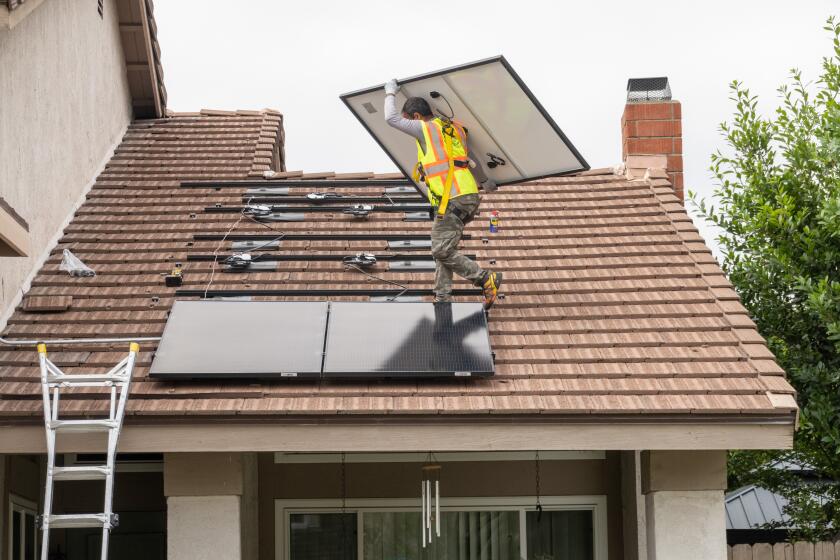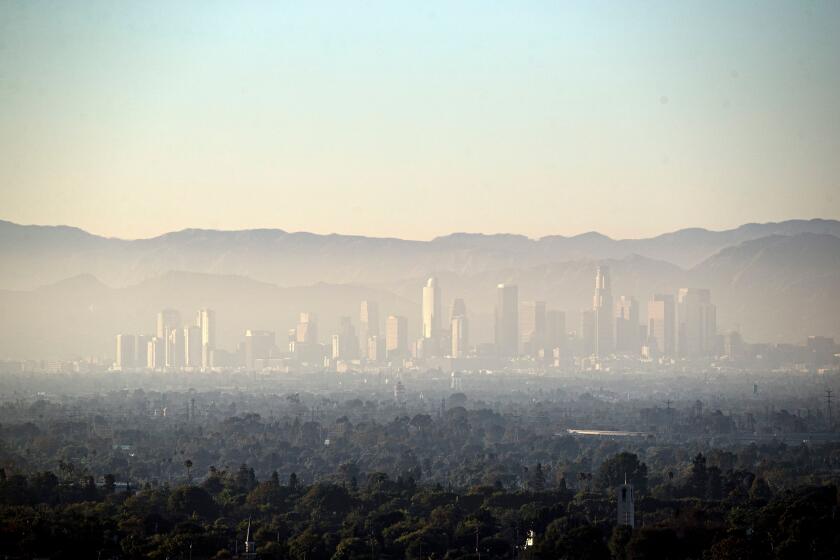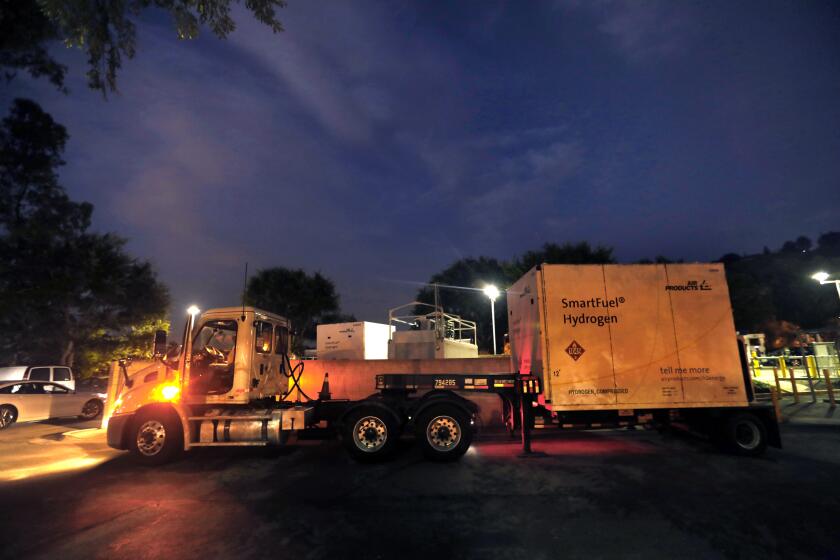Editorial: SoCal’s smog-cutting plan is failing and regulators would rather point fingers than fix it

- Share via
Government officials whose job it is to clean the nation’s worst smog from Southern California’s air should be embarrassed. Instead of working together to cut lung-damaging ozone pollution, they are wasting time pointing fingers at one another.
The region’s decades-long history of failure to meet federal health standards on smog reached a head Friday, when the U.S. Environmental Protection Agency announced its intention to reject California’s plan to clean ozone, the invisible, lung-searing gas, from the South Coast basin, an area with 17 million people across Los Angeles, Orange, Riverside and San Bernardino counties. The EPA says it is because California’s plan is too weak and also exceeds the state’s authority by assigning much of the responsibility for cutting emissions to the federal government.
Unless state and local officials come up with a stronger smog cleanup plan and get it approved by EPA within 18 months of the rejection, Southern California could face escalating penalties, including new permit requirements and fees for businesses, the loss of billions of dollars in highway funding and a federally imposed air quality plan.
State regulators gutted the incentive programs for rooftop solar earlier this year. And now, as feared, the solar industry is contracting. This is the opposite of what we need to fight climate change.
The South Coast Air Quality Management District has tried to shift the blame back to federal regulators by accusing them of doing too little to curb pollution. State and local regulators argue that it’s impossible to meet smog standards without the federal government’s help because many of the biggest polluters in the region, such as ships, trains and aircraft, are federally regulated.
They are right that the federal government must do more. The EPA has failed to cut pollution from diesel-spewing locomotives and is moving far too slowly to address other pollution sources only the federal government has the power to directly regulate through engine emissions standards.
But local regulators share responsibility with their history of failing to act in areas in which they had authority.
President Biden had the opportunity to fix the Trump administration’s decision to keep in place outdated health standards for smog. Instead the EPA is punting its decision about imposing tougher air quality limits until after the 2024 election.
For example, the South Coast district wasted years in fruitless negotiations over a voluntary agreement to reduce emissions from the ports Los Angeles and Long Beach, the region’s largest single source of smog-forming pollution, and years later has yet to adopt air quality rules on the complex even after pledging to so.
And the state Air Resources Board has been too willing to carve out delays and exceptions to emissions rules for heavily polluting industries.
The bottom line is that both the state and federal government have for years rubber-stamped flawed air quality improvement plans that have repeatedly failed to clean Southern California air to the levels promised under the Clean Air Act. Though Southern California’s air is dramatically cleaner than it was decades ago, progress has stalled and even backslid in some cases, and it remains the worst in the nation.
New Treasury Department rules for hydrogen are a good start because they set out strict guidelines for what will be eligible for lucrative tax credits.
All levels of government are at fault for failing to act with the urgency that the country’s most smog-plagued communities deserve. The beneficiaries are often big-money industries that profit from externalizing the health costs of their pollution, while regular people pay with sickness and shortened lives.
No more excuses. EPA Administrator Michael Regan, state Air Resources Board Chair Liane Randolph and AQMD Board Chair Vanessa Delgado should stop trying to assign blame and start working together to execute a bold and ambitious plan that leverages each of their distinct powers and responsibilities to finally deliver the clean air we all deserve.
More to Read
A cure for the common opinion
Get thought-provoking perspectives with our weekly newsletter.
You may occasionally receive promotional content from the Los Angeles Times.












